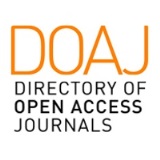Imprtoving argumentative text writing throught th use of self-regulated strategies
DOI:
https://doi.org/10.58265/pulso.5068Keywords:
Writing, Self-Regulation, Language, Elementary SchoolAbstract
Self-regulated strategy development (SRSD) is a method designed to improve abilities in copying with complex tasks. SRSD uses modelling, self-instruction, guided practice and other resources that facilitate the focused task. We tested the efficiency of a SRSD intervention constructed for improving argumentative text writing. A Spanish Language teacher conducted the intervention for fifty-one 4th grade elementary school students. Those students were compared to a group of 26 students who continued with their ordinary class activities. We evaluated both written texts which were done before and after the intervention. We assessed the teachers score, length, lexical richness and text content. The students who were involved in the SRSD program improved significantly in all the assessed variables, however the students in the control group only improved in the number of written sentences, verbs and words.
Downloads
References
Adkins, M. H., & Gavins, M. V. (2012). Self-regulated strategy development and generalization instruction: effects on story writing and personal narratives among students with severe emotional and behavioral disorders. Exceptionality, 20/4, 235-249.
Baker, S., Chard, D. J., Ketterlin-Geller, L. R., Apichatabutra, C., & Doabler, C. (2009). Teaching writing to at-risk students. The quality of evidence for self-regulated strategy development. Exceptional Children, 75/3, 303-318.
De La Paz, S. (2001). Teaching writing to students with attention deficit disorders and specific language impairment. The Journal of Educational Research, 95/1, 37-47.
Ennis, R.P., & Jolivette, K. (2012). Existing research and future directions for self-regulated strategy development with students with and at risk for emotional and behavioral disorders. The Journal of Special Education. doi: 10.1177/0022466912454682.
Harris, K., & Graham, S. (1985). Improving learning disabled students’ composition skills: self-control strategy trainning. Learning Disability Quarterly, 8/1, 27-36.
Lane, K.L., Graham, S., Harris, K.R., Little, M.A., Sandmel, K., & Brindle, M. (2010). Story writing: The effects of self-regulated strategy development for second-grade students with writing and behavioral difficulties. Journal of Special Education, 44, 107–128.
Lienemann, T.O., & Reid, R. (2006). Self-regulated strategy development for students with learning disabilities. Teacher Education and Special Education, 29/1, 3-11.
National Center on Accelerated Student Learning (2013). POW +TREE with transfer lessons. Recuperado de http://kc.vanderbilt.edu/casl/powtree.html
Reed, A. (2011). Simple Concordance Program. Recuperado de http:// www.textworld.com/
Saddler, B. (2006). Increasing story-writing ability through self-regulated strategy development: effects on young writers with learning disabilities. Learning Disability Quarterly, 29/4, 291-305.
Downloads
Published
How to Cite
Issue
Section
License
Copyright (c) 2022 Pulso. Revista de educación

This work is licensed under a Creative Commons Attribution-NonCommercial-NoDerivatives 3.0 Unported License.
This journal offers immediate open access to its content based on the idea that offering readers free access to research favours a global exchange of knowledge.
Papers are published in the electronic version of the journal under a Creative Commons License: Attribution-NonCommercial-No derivatives 4.0 International
Authors are allowed and encouraged to promote the post-print version (reviewed and accepted for publication version) of their work online before publishing them. This favours their earlier circulation and dissemination and thus a possible increase in their citation and reach among the academic community.













